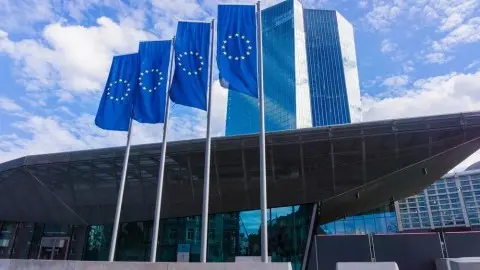ECB: Solomonic end to QE
With an unprecedented communication twist, the ECB today more or less announced the end of QE. While the real motivation of this step remains unclear in light of increased uncertainty, the door to extend QE into 2019 has not entirely been closed
After last week’s speech by ECB Chief Economist Peter Praet, today’s decision did no longer come as a surprise. The ECB just took another important step towards a gentle end of QE. In fact, the ECB made three important announcements:
- A de facto end of QE in December. Today’s key message was that the ECB “anticipates” an extension of QE from September to December at €15 billion per month, from currently €30 billion, before ending the net purchases in December. All of this being subject to incoming data.
- Stronger forward guidance. The announcement that the ECB expects interest rates "to remain at their present levels at least through the summer of 2019 and in any case for as long as necessary to ensure that inflation is back at target" is a signal that sequencing is clearly longer than the six months markets had been anticipating for a long while. A rate hike before September 2019 looks highly unlikely.
- Re-introduction of easing bias. While previously the ECB had dropped the possibility of stepping up QE, it today re-introduced a kind of easing bias by stating that “the Governing Council stands ready to adjust all of its instruments as appropriate to ensure that inflation continues to move...” towards target.
Today’s decision was taken against the background of what the ECB described as "substantial" progress "towards a sustained adjustment in inflation." A clear change in the ECB’s assessment compared with the last meeting. Particularly in light of hardly any changes in the ECB’s own macro-economic assessment.
As regards growth, the ECB actually sent a mixed message. On the one hand, ECB president Mario Draghi emphasised the strength of the eurozone recovery despite a soft patch, while on the other hand pointing to recent disappointments in incoming data, new downside risks stemming from financial market volatility and a downward revision of the ECB’s staff growth projections for 2018 (from 2.4% to 2.1%. For 2019 and 2020, the staff projections for GDP growth remained unchanged at 1.9% and 1.7% respectively). As regards inflation, Draghi stated that “measures of underlying inflation remain generally muted” and the staff projections also did not point to any imminent inflationary pressure. As expected, the inflation forecasts for 2018 and 2019 were revised upwards significantly to 1.7% in both years, on the back of higher oil prices. Interestingly, the longer-term inflation forecasts for 2020 remained unchanged at 1.7%.
Admittedly, today’s ECB decision leaves a bit of an aftertaste. At least for ECB watchers who try to read the ECB’s internal reaction function. Moving from not having discussed the outlook for monetary policy at all to a de facto end of QE within six weeks’ time comes as a bit of a surprise. Particularly given that in these six weeks there have been hardly any upside or positive surprises to growth and inflation. To some extent, it seems as if the ECB was getting cold feet and that the rising tensions within the Governing Council had to be calmed down.
Even though technically speaking today’s ECB meeting did not present an actual decision but only a declaration of intent, the symbolic meaning of the meeting is high. The meeting marks another important step towards a gentle end to QE but at the same time, it does not mark the start of monetary tightening. A first rate hike is still far out. In our view, the economic reasoning leading to today’s decision might not necessarily win a beauty contest. The decision is a truly Solomonic compromise between the hawks and the doves. The hawks finally got their end-date for QE, while the doves still have their open door for more if needed. Everyone’s a winner…
This publication has been prepared by ING solely for information purposes irrespective of a particular user's means, financial situation or investment objectives. The information does not constitute investment recommendation, and nor is it investment, legal or tax advice or an offer or solicitation to purchase or sell any financial instrument. Read more
Download
Download article
14 June 2018
In Case You Missed It: Confidence and cracks This bundle contains 7 Articles